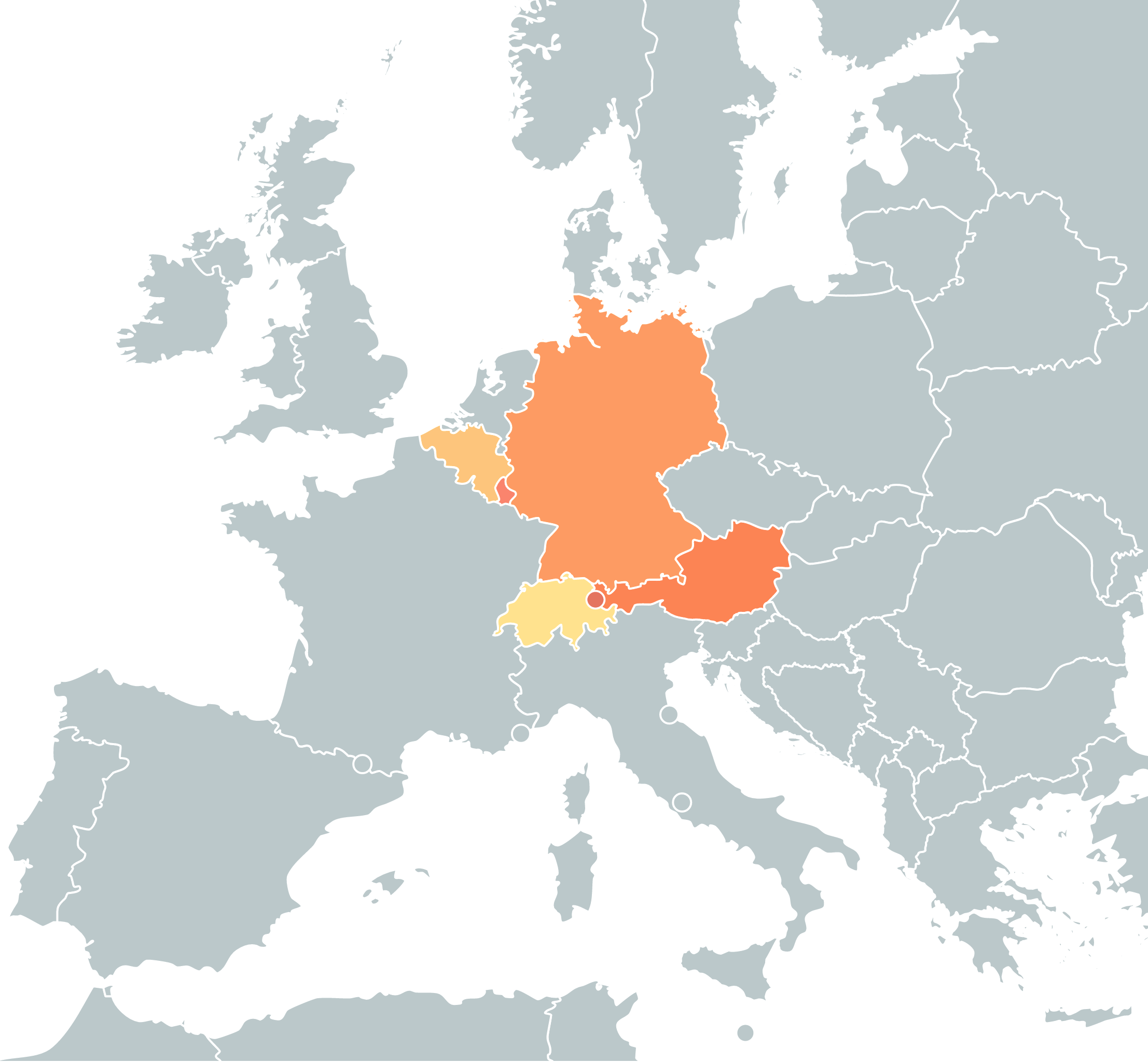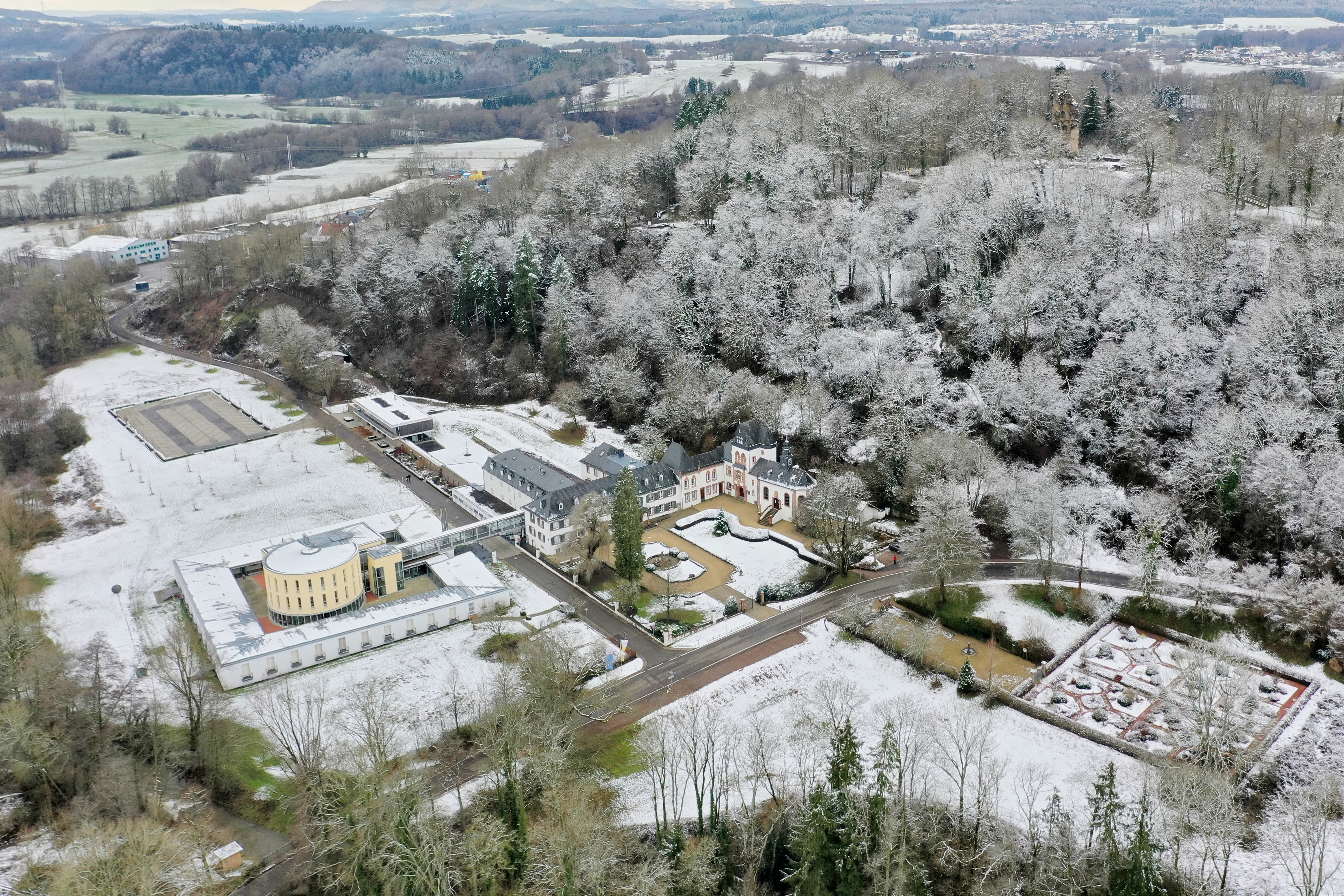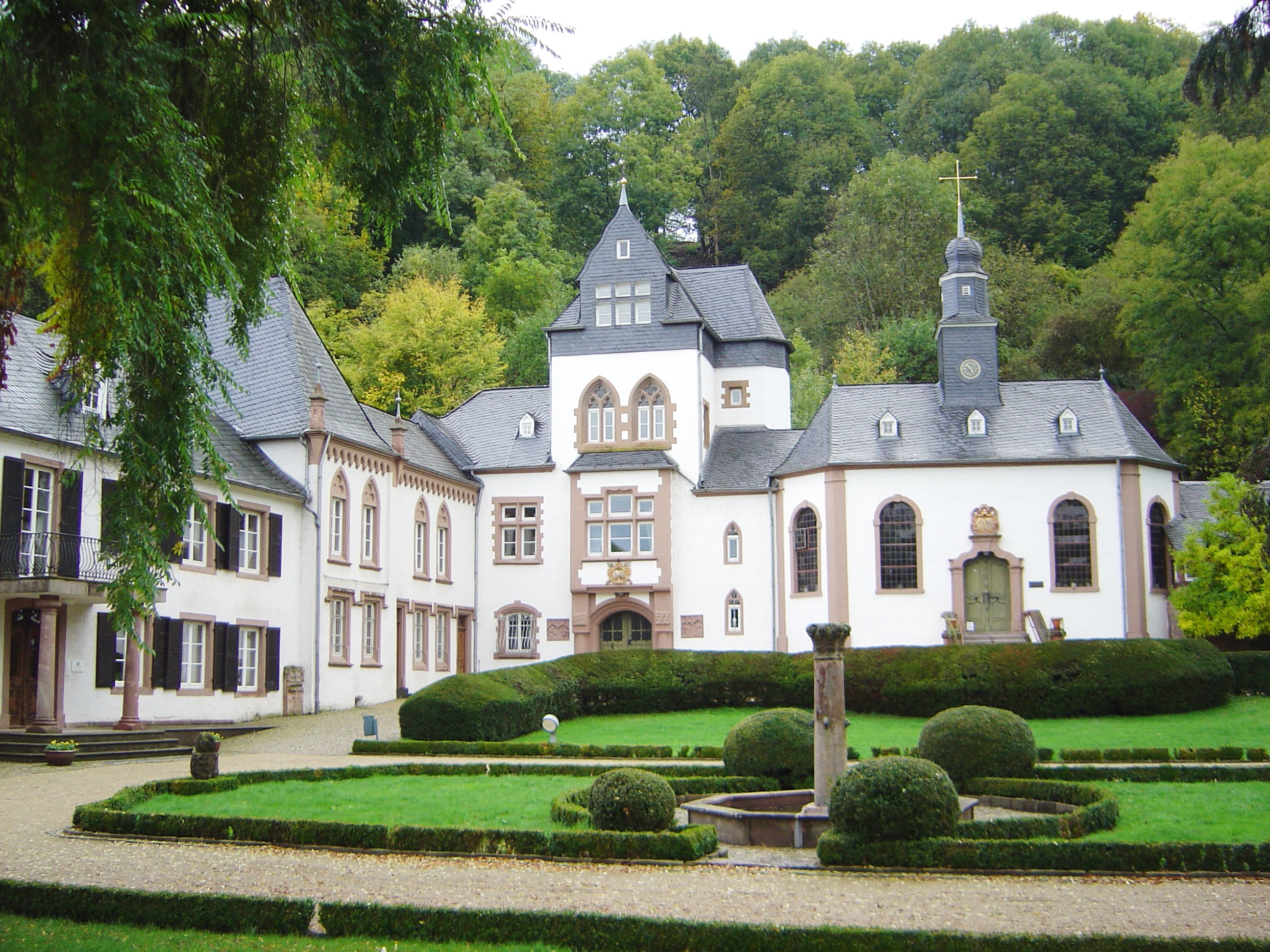|
Dagstuhl Castle
Dagstuhl Castle (in German: Burgruine Dagstuhl or Burg Dagstuhl) is a ruined castle on the top of a hill near the town of Wadern, ''kreis'' Merzig-Wadern, in Saarland, Germany. It overlooks the newer Schloss Dagstuhl in the valley below, which is historic, but has been converted for use as a meeting centre for computer science. The castle was founded by Knight Boemund of Saarbrücken sometime before 1290, probably for Bohemond I von Warnesberg, Archbishop of Trier. The name derives from the German word for roof, "Dach", because of the roof-like shape of the hill on which the castle stands. The castle ruins have been archaeologically explored and were improved for public access in 2004. See also * Schloss Dagstuhl Dagstuhl is a computer science research center in Germany, located in and named after a district of the town of Wadern, Merzig-Wadern, Saarland. Location Following the model of the mathematical center at Oberwolfach, the center is installed in ... Reference ... [...More Info...] [...Related Items...] OR: [Wikipedia] [Google] [Baidu] |
German Language
German ( ) is a West Germanic language mainly spoken in Central Europe. It is the most widely spoken and official or co-official language in Germany, Austria, Switzerland, Liechtenstein, and the Italian province of South Tyrol. It is also a co-official language of Luxembourg and Belgium, as well as a national language in Namibia. Outside Germany, it is also spoken by German communities in France ( Bas-Rhin), Czech Republic (North Bohemia), Poland ( Upper Silesia), Slovakia (Bratislava Region), and Hungary ( Sopron). German is most similar to other languages within the West Germanic language branch, including Afrikaans, Dutch, English, the Frisian languages, Low German, Luxembourgish, Scots, and Yiddish. It also contains close similarities in vocabulary to some languages in the North Germanic group, such as Danish, Norwegian, and Swedish. German is the second most widely spoken Germanic language after English, which is also a West Germanic language. German ... [...More Info...] [...Related Items...] OR: [Wikipedia] [Google] [Baidu] |
Wadern
Wadern is a municipality in the federal state Saarland, which is situated in the southwest of Germany. It is part of the district Merzig-Wadern. Wadern consists of 13 urban districts with approximately 16.000 inhabitants. With 143 inhabitants per km2 it is sparsely populated, but, with an area of 111 km2, Wadern is the third largest municipality in Saarland after Saarbrücken and St. Wendel. The town is divided into 14 urban districts and altogether 24 villages belong to the commune. The town is part of the Moselle Franconian language area. Geography Wadern is located at the foot of the Schwarzwälder Hochwald History Stone tools and different grave-mounds in the so-called "Hochwald" region are evidence for the city's existence in a time where there were no written sources ever found (Prehistory). In connection with the conquest by the Romans (58-51/50 B.C.) first written reports were discovered. Gaius Julius Caesar, the Roman general, created a detailed and written descri ... [...More Info...] [...Related Items...] OR: [Wikipedia] [Google] [Baidu] |
Merzig-Wadern
Merzig-Wadern is a ''Kreis'' (district) in the northwest of the Saarland, Germany. Neighboring districts are Trier-Saarburg, Sankt Wendel, Saarlouis, the French ''département'' Moselle, and Luxembourg. History The district was created in 1816 when the area became property of Prussia. After World War I the Saar area was under special government of the League of Nations, which split the district into two. The area around Wadern stayed Prussian, while the Merzig area became part of the Saar area. In 1935, the Saar area rejoined Germany; however, it took till after the World War II that the two parts of the district were reunited in 1946. Geography The river Saar flows through the district, the Moselle forms the boundary in the west to Luxembourg. Coat of arms The coat of arms show the symbols of those countries which had possessions in the district's area. The top-left show the cross of Trier, the top-right those of Lorraine. The wolf hook in the bottom-left represents Dagstuhl, ... [...More Info...] [...Related Items...] OR: [Wikipedia] [Google] [Baidu] |
Saarland
The Saarland (, ; french: Sarre ) is a state of Germany in the south west of the country. With an area of and population of 990,509 in 2018, it is the smallest German state in area apart from the city-states of Berlin, Bremen, and Hamburg, and the smallest in population apart from Bremen. Saarbrücken is the state capital and largest city; other cities include Neunkirchen and Saarlouis. Saarland is mainly surrounded by the department of Moselle (Grand Est) in France to the west and south and the neighboring state of Rhineland-Palatinate in Germany to the north and east; it also shares a small border about long with the canton of Remich in Luxembourg to the northwest. Saarland was established in 1920 after World War I as the Territory of the Saar Basin, occupied and governed by France under a League of Nations mandate. The heavily industrialized region was economically valuable, due to the wealth of its coal deposits and location on the border between France and Germany. Saa ... [...More Info...] [...Related Items...] OR: [Wikipedia] [Google] [Baidu] |
Germany
Germany, officially the Federal Republic of Germany (FRG),, is a country in Central Europe. It is the most populous member state of the European Union. Germany lies between the Baltic and North Sea to the north and the Alps to the south. Its 16 constituent states have a total population of over 84 million in an area of . It borders Denmark to the north, Poland and Czechia to the east, Austria and Switzerland to the south, and France, Luxembourg, Belgium, and the Netherlands to the west. The nation's capital and most populous city is Berlin and its main financial centre is Frankfurt; the largest urban area is the Ruhr. Settlement in what is now Germany began in the Lower Paleolithic, with various tribes inhabiting it from the Neolithic onward, chiefly the Celts. Various Germanic tribes have inhabited the northern parts of modern Germany since classical antiquity. A region named Germania was documented before AD 100. In 962, the Kingdom of Germany formed the ... [...More Info...] [...Related Items...] OR: [Wikipedia] [Google] [Baidu] |
Schloss Dagstuhl
Dagstuhl is a computer science research center in Germany, located in and named after a district of the town of Wadern, Merzig-Wadern, Saarland. Location Following the model of the mathematical center at Oberwolfach, the center is installed in a very remote and relaxed location in the countryside. The Leibniz Center is located in a historic country house, Schloss Dagstuhl (Dagstuhl Castle), together with modern purpose-built buildings connected by an enclosed footbridge. The ruins of the 13th-century Dagstuhl Castle are nearby, a short walk up a hill from the Schloss. History The Leibniz-Zentrum für Informatik (LZI, ''Leibniz Center for Informatics'') was established at Dagstuhl in 1990. In 1993, the over 200-year-old building received a modern extension with other guest rooms, conference rooms and a library. The center is managed as a non-profit organization, and financed by national funds. It receives scientific support by a variety of German and foreign research institutio ... [...More Info...] [...Related Items...] OR: [Wikipedia] [Google] [Baidu] |
Dagstuhl
Dagstuhl is a computer science research center in Germany, located in and named after a district of the town of Wadern, Merzig-Wadern, Saarland. Location Following the model of the mathematical center at Oberwolfach, the center is installed in a very remote and relaxed location in the countryside. The Leibniz Center is located in a historic country house, Schloss Dagstuhl (Dagstuhl Castle), together with modern purpose-built buildings connected by an enclosed footbridge. The ruins of the 13th-century Dagstuhl Castle are nearby, a short walk up a hill from the Schloss. History The Leibniz-Zentrum für Informatik (LZI, ''Leibniz Center for Informatics'') was established at Dagstuhl in 1990. In 1993, the over 200-year-old building received a modern extension with other guest rooms, conference rooms and a library. The center is managed as a non-profit organization, and financed by national funds. It receives scientific support by a variety of German and foreign research institut ... [...More Info...] [...Related Items...] OR: [Wikipedia] [Google] [Baidu] |
Saarbrücken
Saarbrücken (; french: link=no, Sarrebruck ; Rhine Franconian: ''Saarbrigge'' ; lb, Saarbrécken ; lat, Saravipons, lit=The Bridge(s) across the Saar river) is the capital and largest city of the state of Saarland, Germany. Saarbrücken is Saarland's administrative, commercial and cultural centre and is next to the French border. The modern city of Saarbrücken was created in 1909 by the merger of three towns, Saarbrücken, St. Johann, and Malstatt-Burbach. It was the industrial and transport centre of the Saar coal basin. Products included iron and steel, sugar, beer, pottery, optical instruments, machinery, and construction materials. Historic landmarks in the city include the stone bridge across the Saar (1546), the Gothic church of St. Arnual, the 18th-century Saarbrücken Castle, and the old part of the town, the ''Sankt Johanner Markt'' (Market of St. Johann). In the 20th century, Saarbrücken was twice separated from Germany: from 1920 to 1935 as ca ... [...More Info...] [...Related Items...] OR: [Wikipedia] [Google] [Baidu] |
Bohemond I Von Warnesberg
Bohemond of Warnesberg (died 9 December 1299) was the Archbishop of Trier (as Bohemond I) and a Prince Elector of the Holy Roman Empire from 1286 to his death. He achieved high religious postings in both Trier and Metz before being selected to replace Henry of Finstingen as archbishop in the former. Chosen by Pope Nicholas IV, he did not receive his confirmation in Rome until 6 March 1289, after three years during which two of his competitors had died and the third, Gerard II of Eppstein had been received the mitre in Mainz. He was a man of letters and a knight, concerned for both the spiritual and saecular health of his underlings. He had a high reputation with his fellow princes, but was unable to impose his will on those of his cathedral chapter who opposed him. When the pope appointed Peter von Aspelt and Johannes Gylet cathedral canons, Bohemond opposed them because they were not locals. Even a papal interdict did not cause him to relent. When King Rudolf I of Germ ... [...More Info...] [...Related Items...] OR: [Wikipedia] [Google] [Baidu] |
Archbishop Of Trier
The Diocese of Trier, in English historically also known as ''Treves'' (IPA "tɾivz") from French ''Trèves'', is a Latin Church ecclesiastical territory or diocese of the Catholic church in Germany."Diocese of Trier" '' Catholic-Hierarchy.org''. David M. Cheney. Retrieved February 29, 2016"Diocese of Trier" ''GCatholic.org''. Gabriel Chow. Retrieved February 29, 2016 When it was the archbishopric and Electorate of Trier, it was one of the most importan ... [...More Info...] [...Related Items...] OR: [Wikipedia] [Google] [Baidu] |






